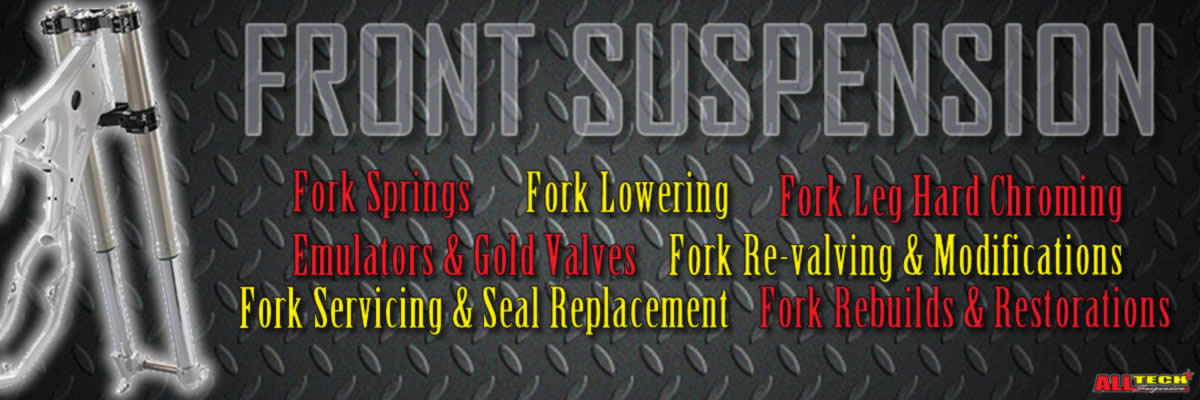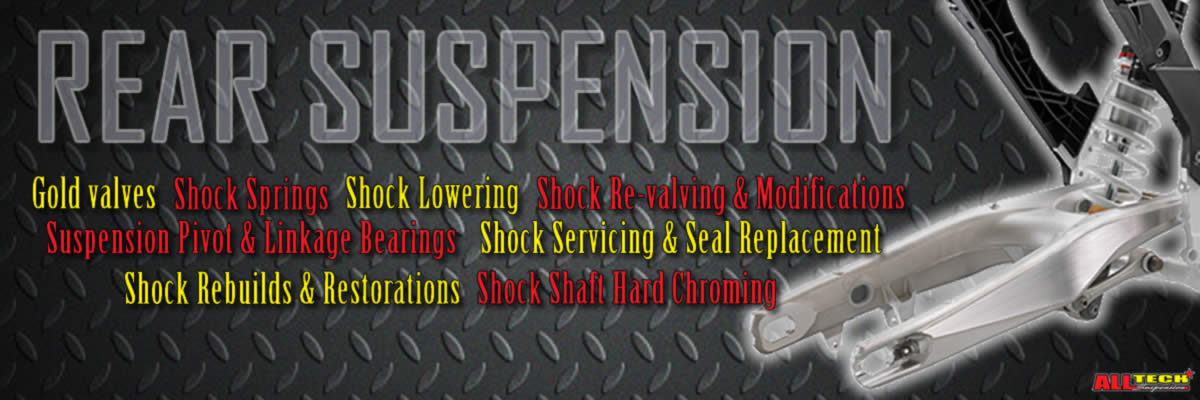What is a re-valve? This is a good question if you don't know much about suspension, quite often you will hear this term used in the motorcycle community. There are many common misconceptions, stories & unfounded truths surrounding the term 're-valve'. At Alltech suspension, the term 're-valve' means modifying of the suspension components to improve the performance to better suit the riders skill level, weight & needs. Both forks & shocks on all off road or road motorcycles have springs or air holding them up, they use oil hydraulics to create the necessary damping forces for the suspension to work.
The following information is intended to provide a very basic understanding of how off road & road forks & shock hydraulic control systems works.
Compression Stroke;
2) The Dampener rod or shaft entering the chamber is displacing oil, as oil cannot be compressed the displacement of oil must have a collapsible space or a secondary chamber to hold the extra volume of oil. The flow of this oil is also controlled commonly by a piston/s (valve/s) with shims, by modifying/controlling the flow control to the collapsible space or secondary chamber is also part of the 're-valve' process.
3) In the collapsible space or secondary chamber there is also a need to allow the oil in, the entering oil needs somewhere to go; this means the collapsible space or secondary chamber volume must increase (expand). In a fork or shock this is commonly achieved by having a bladder or reservoir piston filled with nitrogen or a spring (pressure spring) as the oil comes in, the bladder or reservoir piston is compressed. Adjusting how the expansion of the collapsible space or secondary chamber works. This is also part of the re-valve process.
4) In addition there is typically a small hole, or preloaded spring/shim set up that allows oil to bypass the metering of oil in one of these areas; the size of this hole or preload on the spring/shim is controlled by an external adjuster. That is how you have external control over the compression stroke.
Rebound Stroke
After the suspension has compressed it then extends again (rebound stroke). The rebound stroke is the same as the compression stroke but in reverse. The compression ports seal and the rebound ports open up as the rod or shaft exits drawing the oil back into the main chamber again.
Suspension components;
Both forks and shocks all do these basics during the compression and rebound stroke – the metering of oil flow in each area is managed by some type of ‘valve’ system. For a suspension tuner the oil control in each area must be matched. When the restrictive forces generated in one area are changed the appropriate change has to be made in the other areas to maintain a well-balanced suspension system. As suspension has become more technical the balancing of forces within the metering systems; and ultimately the pressures generated in the separate oil volumes has become increasingly important.
As shaft speeds increase or decrease (the suspension is compressed quickly or slowly) the amount of oil needing to flow in each area changes dramatically. Most suspension systems have high and low speed control; the low speed portion is always working. As the amount of oil flowing through the low speed reaches its maximum the high speed portion comes into effect. The low speed / high speed control is achieved in many different ways, additionally modern suspension is adding external high and low speed adjustments in many cases. Our intent here is not to explain any systems operation just the basic theory that applies to all. The suspension tuner has to factor in multiple systems all working in conjunction with each other as shaft speeds increase and decrease.
When purchasing a new motorcycle the manufacturer does not know the specific needs or skill set of the end user. Because of this they put in a setting that will work “OK” in most situations trying to cover all levels of riders that could potentially ride that bike. When suspension is “Re-valved” the suspension setting is specific to the riders needs and skill set; riding becomes safer and more fun, in many cases a riders speed increases as confidence in the suspension performance builds.
So who benefits most from a “re-valve”? Everyone is the answer! Setting the suspension up correctly at any level, for any riding type is essential.
It does not matter how fast your engine is unless you can get the power to the ground (traction)!











